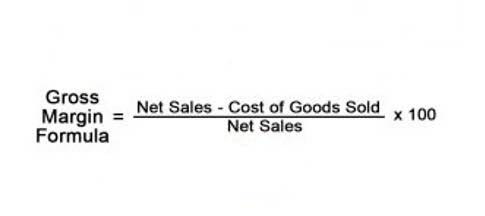
Although gross profit is a helpful metric for assessing the profitability of sales in a company, it does not accurately reflect the profitability of the corporation as a whole. If you’re in the market for an accounting software application that can calculate your cost of goods sold, be sure to check out The Ascent’s accounting software reviews. Of course, the best way to manage the cost of goods sold is by using accounting tools made for small businesses such as small business accounting software. For instance, if you currently purchase rocking chairs from a vendor for resale, your cost of goods sold reflects the cost of purchasing the chairs from your vendor, including freight costs. Here in our example, we assume a gross margin of 80.0%, which we’ll multiply by the revenue amount of $100 million to get $80 million as our gross profit.
Note that the beginning balance of the current year’s inventory will always be equal to the ending balance of the previous year’s inventory. If Anthony needed to repurpose the books, or was manufacturing the books in-house, he would need to include the wages of his employees responsible for creating or repurposing the books. By subtracting where is cost of goods sold on balance sheet 1 by the gross margin, we can derive the COGS margin. Let’s say there’s a clothing retail store that starts off Year 1 with $25 million in beginning inventory, which is the ending inventory balance from the prior year. But of course, there are exceptions, since COGS varies depending on a company’s particular business model.
Journal example of how to record the cost of goods sold
The gross profit margin is also calculated by using the cost of goods sold. After the calculation, users will assess whether or not the entity’s gross profits could handle others’ sales and administrative expenses. This is really important for potential investors as they only want to invest in a profitable company. Every business that sells products, and some that sell services, must record the cost of goods sold for tax purposes. The calculation of COGS is the same for all these businesses, even if the method for determining cost (FIFO, LIFO, or average costing method) is different. Businesses may have to file records of COGS differently, depending on their business license.
When you create a COGS journal entry, increase expenses with a debit, and decrease them with a credit. If you haven’t decided on a method yet, factor in how each may affect your cost of goods sold. For more information on how to pick an inventory valuation method, read our FIFO vs. LIFO explainer. This metric is also a percentage that shows what amount of money a company has made as a percentage of revenue after paying for purchasing or producing goods. Therefore, the assets’ discount amounted to $800, and the company returned $1,800 worth of t-shirts.
Calculations of Costs of Goods Sold, Ending Inventory, and Gross Margin, First-in, First-out (FIFO)
Beginning merchandise inventory had a balance before adjustment of $3,150. The inventory at period end should be $7,872, requiring an entry to increase merchandise inventory by $4,722. Journal entries are not shown, but the following calculations provide the information that would be used in recording the necessary journal entries. Cost of goods sold was calculated to be $8,283, which should be recorded as an expense. The credit entry to balance the adjustment is for $13,005, which is the total amount that was recorded as purchases for the period. This entry distributes the balance in the purchases account between the inventory that was sold (cost of goods sold) and the amount of inventory that remains at period end (merchandise inventory).

But not all labor costs are recognized as COGS, which is why each company’s breakdown of their expenses and the process of revenue creation must be assessed. For example, assume that a company purchased materials to produce four units of their goods. COGS does not include general selling expenses, such as management salaries and advertising expenses. These costs will fall below the gross profit line under the selling, general and administrative (SG&A) expense section.


